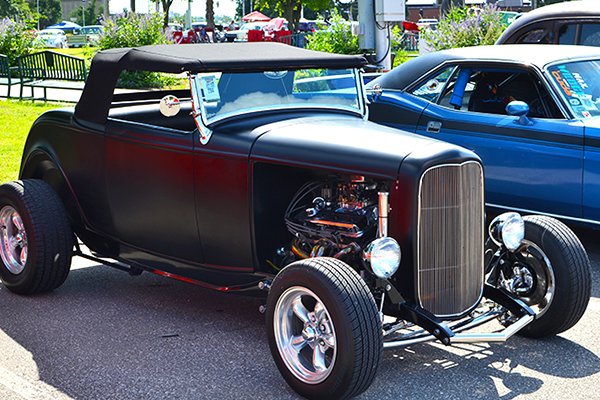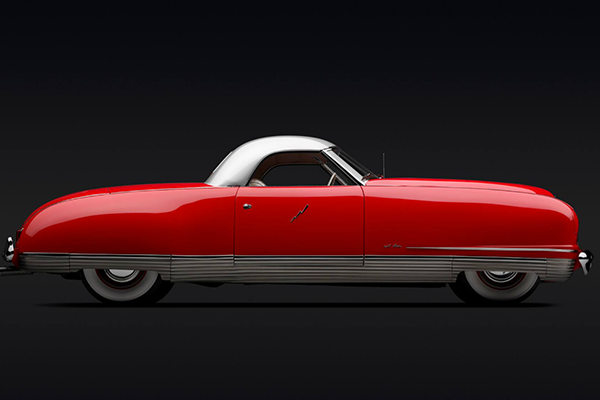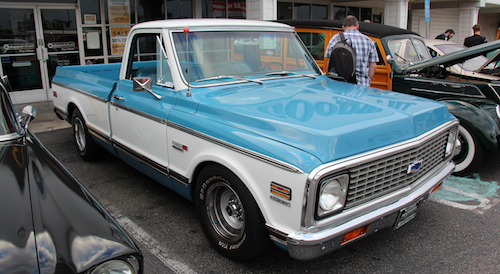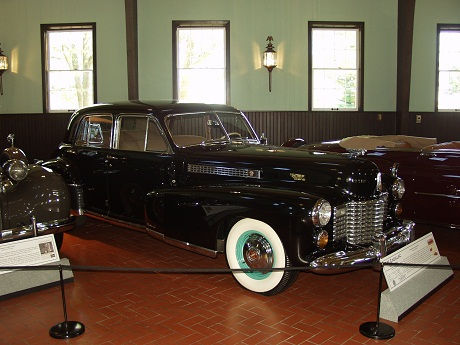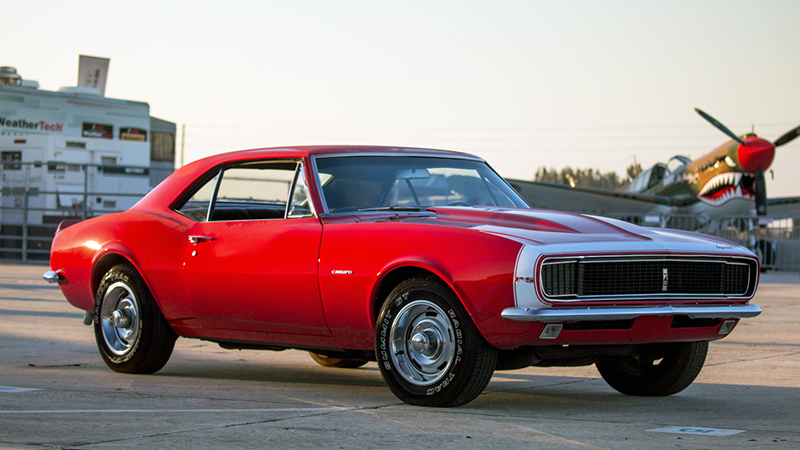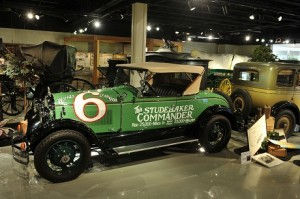Lane Motor Museum showroom. Photo credit: Lane Motor Museum.
Attention, all people who own a European car that starts with the letter “E” or “Q,” and who are looking to donate or sell that vehicle to a museum! You are in demand. Here’s the story. The Lane Motor Museum has more than 400 European-made cars and advertises that they have cars from A to Z. The problem, though, is that they don’t really have one beginning with “E” or “Q.” Here is what they do have:
- Amphicar
- Berkeley
- Citroën
- DKW
- Fiat
- Georges Irat
- Honda
- Ifa
- Jensen
- Kawasaki
- Lotus
- MG
- NSU
- OTAS
- Porsche
- Renault
- Scootacar
- Tatra
- Ultra Van
- Voisin
- Weidner
- Xtreme Motor Co.
- Yamaha
- Zündapp
In fact, for most letters, they have more than one vehicle – often many more. But, no “E” or “Q.” Yet.
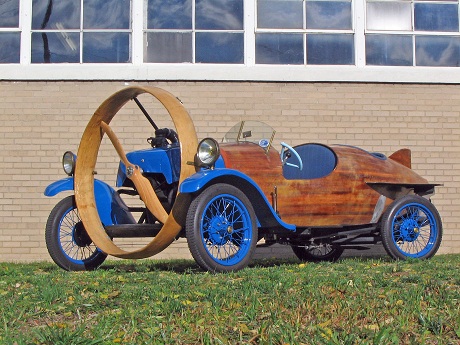
1932 Helicron. Photo credit: Lane Motor Museum.
Backing up a Bit
The Lane Motor Museum is the brainchild of Jeff Lane, who established this non-profit museum in 2002 to “share in the mission of collection and preserving automotive history for future generations.” This car museum is one of the few in the United States to focus on European cars. These aren’t just display pieces, either; the goal is to keep all cars running and, typically, about 90% of the cars at any one time are in fact operational.
Advance Auto Parts sat down to talk with Jeff Lane, who grew up in Romeo, Michigan, only a 45-minute trip from the Motor City. His grandfather, Wilbur C. Lane, owned a Ford dealership from 1936 to 1954, while his father, Gene, owned an auto supply store. So, it’s not surprising that Jeff admits to being a “car guy from way back when.” When asked about his earliest car memory, the answer is simple: “riding my Big Wheel.”
By the time he was seven or eight, he was already working on mini bikes. When he was ten, his father – who had been overseas in the army – bought an MG and Jeff worked on that vehicle while at his dad’s shop. When not fixing cars, he and his father other traveled around the country to car meets. And, when Jeff turned twelve, his father asked him what he wanted for Christmas – and he, of course, said his own MG. His father delivered . . . providing him with a pickup truck full of MG parts. “It took me four years to put them all together,” Jeff says, “and then I took my driver’s ed test in that car.”
Jeff then began collecting cars. “I am very interested in cars for what they represent and wasn’t focused on the number. But, as I got more and more cars, I needed more and more space. At one point, I thought I had 30 to 40 vehicles but it ends up that I actually had 70. At that point, I needed to put all of my cars in one place.”
The place chosen was a former bakery in Nashville, Tennessee with 132,000 square feet of space featuring a “high ceiling, natural light, and hand-crafted brick and maple wood flooring.” The problem was that it was also filled with junk left over from the bread-making years, ranging from machine parts to old fan motors and pumps to empty boxes to fruitcake labels. The detritus was stacked almost to the ceiling. Because the building had been empty for nearly a decade, parts of the roof were caving in and areas of the floor had buckled.
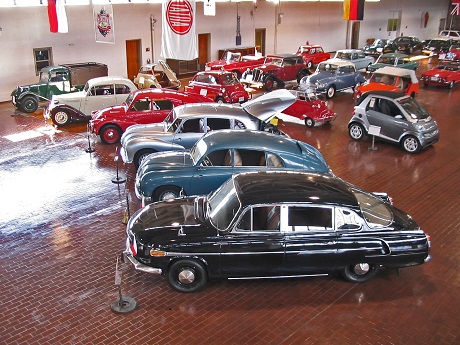
Lane Motor Museum showroom. Photo credit: Lane Motor Museum.
The renovation took about a year, with the goal being to maintain the architectural flavor of the building while bringing everything up to code. Much of the demo work was done by Lane, his staff and their families while they were also interviewing architects to find just the right one for the project. They clearly succeeded in their quest because, in 2007, they received a prestigious architectural preservation award.
Although Jeff did not begin collecting cars with the idea of a museum in mind, the space evolved into quite an impressive one, opened to the public in October 2003. The main floor (approximately 40,000 square feet) contains the vehicles. Jeff continues to expand the collection, with some vehicles in showroom condition; others are not, but attempts are made to restore each vehicle as closely as possible to original specifications. The car museum also has a children’s playroom on a raised platform where kids can ride cars, build toy towns and color pictures.
Self-described as “weird, wacky and wonderful,” the Lane Motor Museum had more than eighty vehicles at the time of the grand opening and current has 150 vehicles, both cars and motorcycles, on display at any one time. Exhibits do rotate. Although a small percentage of this collection is not European, this is the largest museum of European vehicles in the United States, and David Yando, manager of the museum, compares it to “walking through a sculpture gallery.”

Flags hanging from the ceiling identify country of origin of cars. Photo credit: Lane Motor Museum.
Wide Range of Fans
“Hardcore car people,” Jeff says, “those who think they’ve seen everything, discover that they haven’t seen half of what’s in this museum. Maybe they’ve seen pictures of the cars, but not in real life. So enthusiasts love to visit. We’ve also discovered that you don’t have to be an enthusiast to enjoy the vehicles. Other people are simply fascinated by the shapes, coloring and styles of the cars. As just one example, a group of women from California were in the area, attending a conference. Their husbands were car enthusiasts and recommended that they visit. The women were surprised to discover that they loved the museum – and not because they were necessarily interested in the cars; instead, they were interested in the technology.”
Another group of people who frequently visit the car museum: Europeans. “They come to Nashville,” Jeff says, “not necessarily for the museum, then they visit us. We get plenty of visitors from Asia, too. We’ve put up a couple of maps of the United States and the world and we ask visitors to pin where they live. Every five years, we’ve had to change the maps because they’ve gotten so full.”
Fun facts about the Lane Motor Museum
- Smallest vehicle: Peel P50 at 53” long, 39” wide and 53” high; listed by Guinness World Records as the “Smallest Street-Legal Car” and can achieve speeds of up to 40 mph
- Largest vehicle: the amphibious LARC-LX, with the width, length and height of three semis parked side by side – with 9 foot tall tires
- Oldest cars: the 1924 Citroën CV “Trefle” and the 1924 Sima-Violet
- Newest car: 2003 Smart Car by Mercedes, which gets 60+ miles per gallon
- One-of-a-kind car: the 1932 Helicron with a wooden body, and four-foot propeller and wooden guard on its front
- Fastest car: the Caterham Blackbird can go 0 to 60 in 4 seconds, with a top speed of 130 mph
- Most desired cars to someday be added to the collection (other than ones beginning with ”E” or “Q”): Leyat Saloon with a huge airplane propeller in front, and a Mathis 333 with its three wheels and three seats
- Car with the most sentimental back story: the MG that took young Jeff four years to assemble
- How most vehicles are organized: by country with identifying flags hanging from the ceiling and nearby signs describing specs and history
- The exceptions to the rule in the above bullet point: competition vehicles, motorcycles and micro cars each have their own sections
- What’s in the parking garage: oversized and military vehicles
- What remains outside: the 100-ton amphibious LARC-LX, which can be viewed from the motorcycle exhibit area
Important note: Only 150 vehicles are on display at any one time, so you will not see all of these vehicles on any one visit.
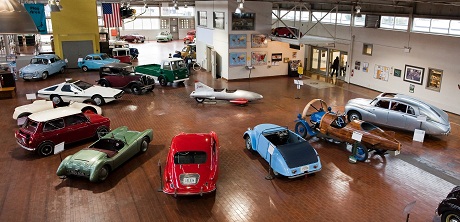
Lane Motor Museum showroom. Photo credit: Lane Motor Museum.
More about Jeff and the Lane Motor Museum
“I drive cars home from the museum frequently,” Jeff says. “Not every day, but certainly when the weather isn’t extreme and when it isn’t rainy. The micro car can’t be driven on the interstate, so I use it when I go out to lunch. I enjoy each of the cars and what they represent. I try to drive each one at least once a year and, when I drive a particular car, I remember why I bought it: maybe because of the instruments, or the seats, or the handling. It’s like renewing a relationship once a year.”
Jeff isn’t especially enthusiastic or optimistic about the development of cars in the future. “Because of today’s regulations, from safety to emissions, you have many more rules. In the 20s, 30s and 40s, you could experiment with car design. Some worked. Others didn’t. Today, though, cars are too much like one another and that takes out some of the fun, and much of the diversity. Sure, it was crazy to drive the 1956 BMW where the car bubble opens in front, but now the freedom to innovate has been taken away.”
The car museum employs a small maintenance and repair staff for vehicle upkeep and restoration. If a car is rare and not available for museum acquisition – usually because of small runs – the Lane team will occasionally create a replica, first trying to contact the original manufacturer for blueprints and permission to recreate. If no blueprints exist, the mechanics rely on photographs and drawings to craft the vehicle.
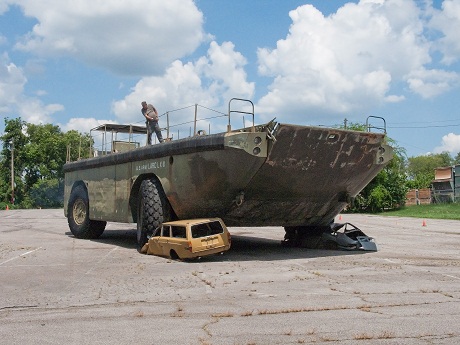
100-ton amphibious LARC-LX, with nine-foot tires. Photo credit: Lane Motor Museum.
When asked how difficult that process can be, Jeff says, “The way we look at it, a car is a car, so we can figure it out.”
The museum is largely barrier free, but staff asks that visitors not touch the cars. Approximately 100 posters and advertisements hang in the art gallery, and special events are often planned, including the 2014 microcar meet.
And what might be the most amazing feature of this museum? “It shows that there are about 130 ways,” Jeff says, “to do just one thing: move people around.”
Editor's note: Whether you drive a museum piece or a beater, Advance Auto Parts has quality auto parts to keep your ride running right. Buy online, pick up in store.
